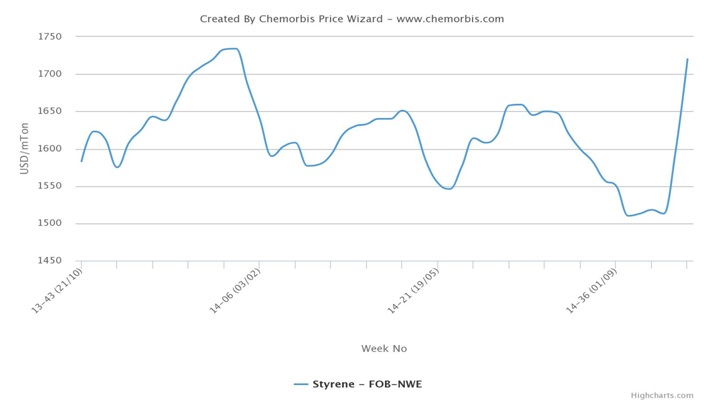COVID-19 Crisis Brings the Environment into the Spotlight. With Energy Management Being Vital for Saving the Environment, BEMS is Poised for a 12.4% Growth Run Over the Next 7 Years
The global Building Energy Management Systems (BEMS) is expected to reach US$8.4billion by the year 2027, trailing a post COVID-19 CAGR of 12.4%, over the analysis period 2020 through 2027.
Building Energy Management System (BEMS) are sophisticated systems integrating hardware, software, and services with information and communication technologies for monitoring, automating, managing, and controlling the energy requirements of buildings. BEMS are microcomputer systems that automatically monitor and control energy-consuming electrical and mechanical equipment such as thermostats, HVAC, and lighting within a single building or a group of buildings in order to enhance energy-efficiency and comfort.
Components such as air conditioners, lighting, boilers, water heaters, elevating machines, outlet machines, plumbing, and sanitation equipment are controlled through BEMS. BEMS function by connecting building engineering services to a central computer that enables control over on/off times, humidity, temperature and other factors.
The concept of BEMS plays a vital role in managing energy demand, especially in multi-building sites and large-sized complex buildings. With the introduction of cloud computing technologies, the functionality BEMS has expanded beyond conventional energy analytics and energy visualization to include demand response and property management. BEMS are primarily used in commercial buildings including hospitals, hotels, educational institutions, club houses, IT parks, malls, and industries.
Although immediate financial challenges may hinder energy efficiency investments in the year 2020, COVID-19 has nevertheless has set the alarm bells ringing. The pandemic has given the world a foretaste of how an environmental crisis can disrupt life as we know it.
The rush to turn residential & commercial buildings into smart buildings will be greater post Covid-19 & beyond, as sustainability & safety become top priority for a pandemic scarred world focused on resilience. The increased post pandemic focus shed on energy consumed by the buildings sector is expected to bring fresh opportunities for growth of Building Energy Management Systems (BEMS). The growth in the market will be driven by the growing regulatory pressure to curb energy wastage in buildings; evolution of smart building technologies and their role in pushing up the property value of buildings; legislation of new green building codes; and emergence of IoT and cloud as a potential game changer for the BEMS market.
The growing government focus worldwide on stepping up investments in smart cities will benefit demand for BEMS as energy management in smart homes and buildings is the first step towards building energy efficient smart cities. Key benefits of BEMS driving its adoption include reduced cost by conserving energy; helps buildings obtain green certification; provides facility managers real-time visibility into energy consumption trends; easy identification of electrical anomalies; and reduced risk of power spikes, shutdowns and electrical equipment failure.
The ongoing migration to smart grids and the resulting grid operators’ adoption of automated demand response (DR) technologies for efficiently managing energy demand is driving the onus on BEMS as a basic prerequisite to deploy DR technologies.
Key Topics Covered:
I. INTRODUCTION, METHODOLOGY & REPORT SCOPE
II. EXECUTIVE SUMMARY
1. MARKET OVERVIEW
- Impact of Covid-19 and a Looming Global Recession
- Despite COVID-19 Crisis Curtailing Growth in the Short-Term, Long-Term Prospects Remain Optimistic for the World BEMS Industry
- An Introduction to Building Energy Management Systems (BEMS)
- BEMS Components
- Advantages of BEMS
- BEMS Envisage Symbolic Shift of Building Environment toward Higher Efficiency
- BMS & EMS: Complementary Technologies for Boosting Energy Efficiency
- Key Concerns with BEMS
- Energy Management Technologies Address Pressing Need to Curb Energy Usage and Carbon Footprint
- Riding High on Inherent Advantages, BEMS to Leap in Right Direction
- Spiraling Demand for Electricity: The Underlying Factor Spurring Need for Efficient Energy Management
- Unwavering Focus on Energy Savings & Volatile Energy Prices to Catalyze BEMS Market in Long Term
- BEMS Emerge as Indispensable Technological Component of Building Projects
- Outlook








